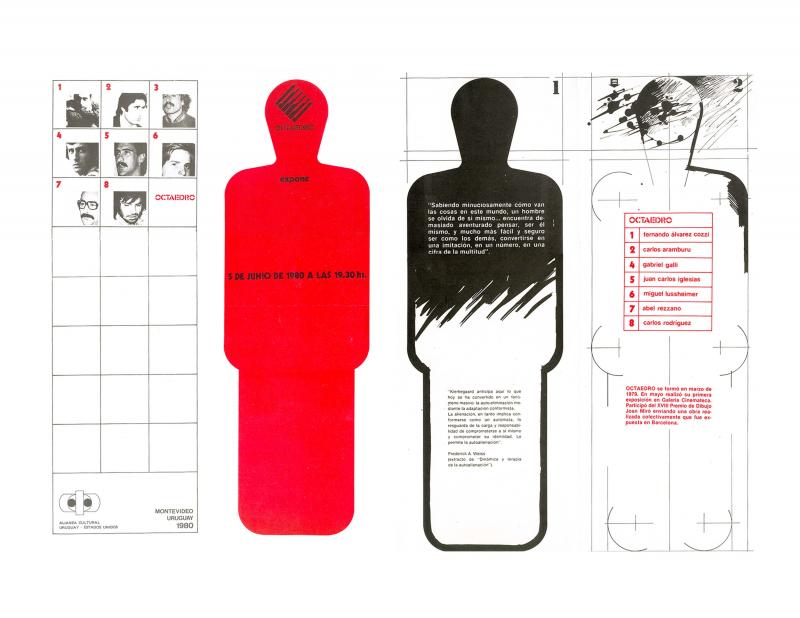Mercedes Sayagués (b. 1953) writes about the exhibition Cinco trabajos with works by the Octaedro group. In the presentation of Cinco trabajos several questions are proposed that relate to the aesthetic object (ephemeral proposal), to the institutional and bureaucratic system of art, and to the inert and nonparticipatory spectator. The artists aimed to maximize thought and the questioning capacity of the public until they could interrogate the context.
The Octaedro group was intensively active and tied to artistic experimental practices that included Mail Art, installations, and settings. The group was established at the end of 1978 by Fernando Álvarez Cozzi (b. 1953), Carlos Aramburu (b. 1951), Carlos Barea (b. 1954), Juan Carlos Iglesias (b. 1956), Miguel Lussheimer (b. 1961), Abel Rezzano (b. 1936), and Carlos Rodríguez (b. 1951). Its members were largely part of the CEA (Centro de Expresión Artística) led by Nelson Ramos (1932–2006), who exerted an important influence with his employment of both drawing and the visual arts, and his use of various materials, generally nonindustrial and primitive in type [on this subject, please refer to the ICAA digital archive for the following text by May Puchet, “Grupo Octaedro-Entrevista a Fernando Álvarez Cozzi” (doc. no. 1259780)]. This led to a transition from drawing to the object, and from the object to the installation. The new collective was characterized by its group debates, lectures, and updated reflections relating to the nature of art itself, educating the public, and the artistic media, among others. Some of these ideas were disseminated in exhibition invitations [see in the archive “Octaedro expone” (doc. no. 1260107)]. The first group exhibition displayed individual works but with the intent of a common installation. Poetics tied the collection together through various themes and by the invitation itself, which was significant as its result was to present a brief biography of each member.


